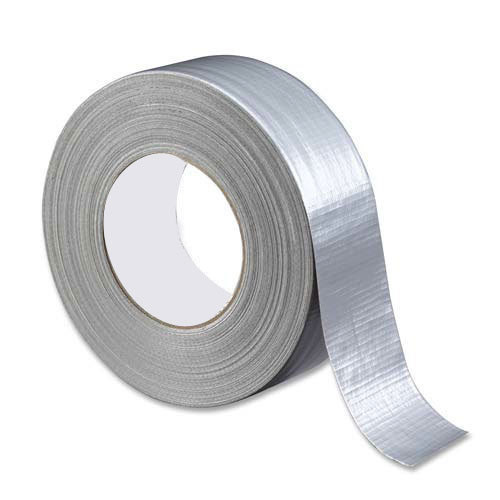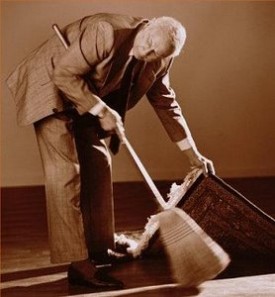
Fundamentals of OE #10: Staying Focused on the big picture
Summary:
- Don’t lose sight of the objective of your OE efforts
- Many OE programs get launched and, years later, after hundreds of changes, little has really improved
- At the end of the day, the shortest path to Operational Excellence is one that makes it easier for your front-line employees to create and deliver value
We’ve seen successful Operational Excellence programs across many industries. While they all have something that is unique and different, there really is no single formula, methodology or tool that will work everywhere. Indeed, it is much easier to identify the things that will prevent your OE program from delivering value than the things that will be guaranteed to work for you.
Among the top of the list of things that can derail your program is losing sight of the bigger picture. This is much easier to do than you would expect. For most OE programs, the lag time between implementation and value creation can be years. This can make it difficult to provide proof of progress, even if you have reliable KPIs. In these cases, it’s easy to lose focus and sacrifice long-term transformational improvements for short-term gains.
Symptoms of losing focus
1. Equating staying busy with progress 
The most common symptom is getting stuck in the bad habit of measuring progress and success by the amount of work being done. With this symptom, the focus is placed on tangible things like the number of documents created, the meetings held, or the percentage of employees that have gone through some form of training. This is a difficult rut to pull yourself out of once employees get into the habit of equating staying busy with creating value. As mentioned earlier, the lag time between initiating an OE program and seeing substantial value creation can be years. In that time, the only available measures are leading indicators measuring the work done. At some point, however, the work should taper off and lagging indicators should begin to show progress.
Continuous change does not always equal continuous improvement.
Common enablers for this include:
- Treating your OE program as a project
- An inadequate definition for OE
2. Avoiding difficult issues
Imagine a scenario where you have a well defined plan for implementing your OE program, and everything is going according to that plan, except for one group who disagrees. This common scenario plays out in every company, and they way they address it can reveal if the program will be successful. One option is to ignore or downplay the feedback from that group in order to stay on schedule. The more challenging, yet correct, option is to address the issue. Keeping in mind that a key objective of an OE program is to align the organization, disagreements should be seen as an opportunity to correct foundational issues. Sweeping these under the rug might help the project stay on schedule, but it defeats the purpose.
The value of a management system is the sum of the misalignments it resolves
When does this happen? The most common enablers for this are:
- Unified Systems, where the objective is to create an additional system rather than address issues of the existing ones.
- When OE programs are treated like projects with fixed deadlines and strict plans
- Unclear governance over the management system processes
3. Changing the outputs, but not the system
How does your company react to an incident? Most companies, when evaluating corrective actions for an incident consider the factors that may have directly caused the incident. For instance, if it’s a case of an operator making a mistake, they question if the documented instructions were correct, if the operator received sufficient training, or the operator followed the instructions and training. Somehow, these factors continue to be found as the culprits, but few stop and ask themselves why that situation was allowed to exist. For example, if a procedure is found to be incorrect, sure it needs to be updated, but why was it incorrect in the first place? The answer is a systematic issue, and if an issue in the system allowed that procedure to be incorrect, it likely allowed many other mistakes as well. Any changes to the output (the documents, training, etc) without addressing the system is temporary at best.
Correcting this requires a shift in focus from worrying about the outputs of the system to the system itself. The telltale sign is whether your system focuses only on creating requirements and rules for the front-line, or if it also resolves how managers make decisions that impact the front-line. Does it drive alignment and consistency in how management works together, how they behave, and the information they consider in making a decision? If you system never impacts their decision-making process, and if your culture improvement excludes leaders, you might be missing opportunities to make drastic improvements.
An OE program that doesn’t change how leaders behave and make decisions is worth its weight in paper
Common enablers for this symptom include:
- If leadership views the MS as something for “others” to follow
- If the MS framework is missing the key decision-making processes
Where to begin
Considering the effort required and how easy it is to get off course, periodic course correction is key. A few best practices are worth considering:
- Build in and reinforce the habit: The best course correction happens frequently and early on. Encourage a questioning attitude and strongly consider constructive feedback from all levels of the organization. The goal is to work through these issues rather than subjugate them.
- Network outside of your organization: Those outside your organization will naturally be more objective, so seek out mentors and collaborate with other professionals for periodic feedback.
- Bring in 3rd party experts: Sometimes you reach a point where you need someone to come take a look under the hood. Experienced advisers can provide a rapid assessment of opportunities and can often be more effective in communicating those opportunities.
Endeavor Management can assist in getting you started. Whether you would like more details on building in frequent course correction, getting in touch with other professionals in your role, or a cold-eyes look at your system, we can help.
Previous Post: “Fundamentals of OE #9: Culture”
This post is an excerpt from the white paper “The Fundamentals for Transforming Your Organization Through Operational Excellence.” Download the complete white paper here.
Let’s Talk
We will help you overcome strategic challenges to realize the business value you seek.

Francisco Soto
Director
Francisco Soto is a thought leader in the operational excellence space. He specializes in simplifying how his clients maximize the value of their strategy through a combination of their integrated management system and culture. Francisco has extensive experience across an array of industries but…


